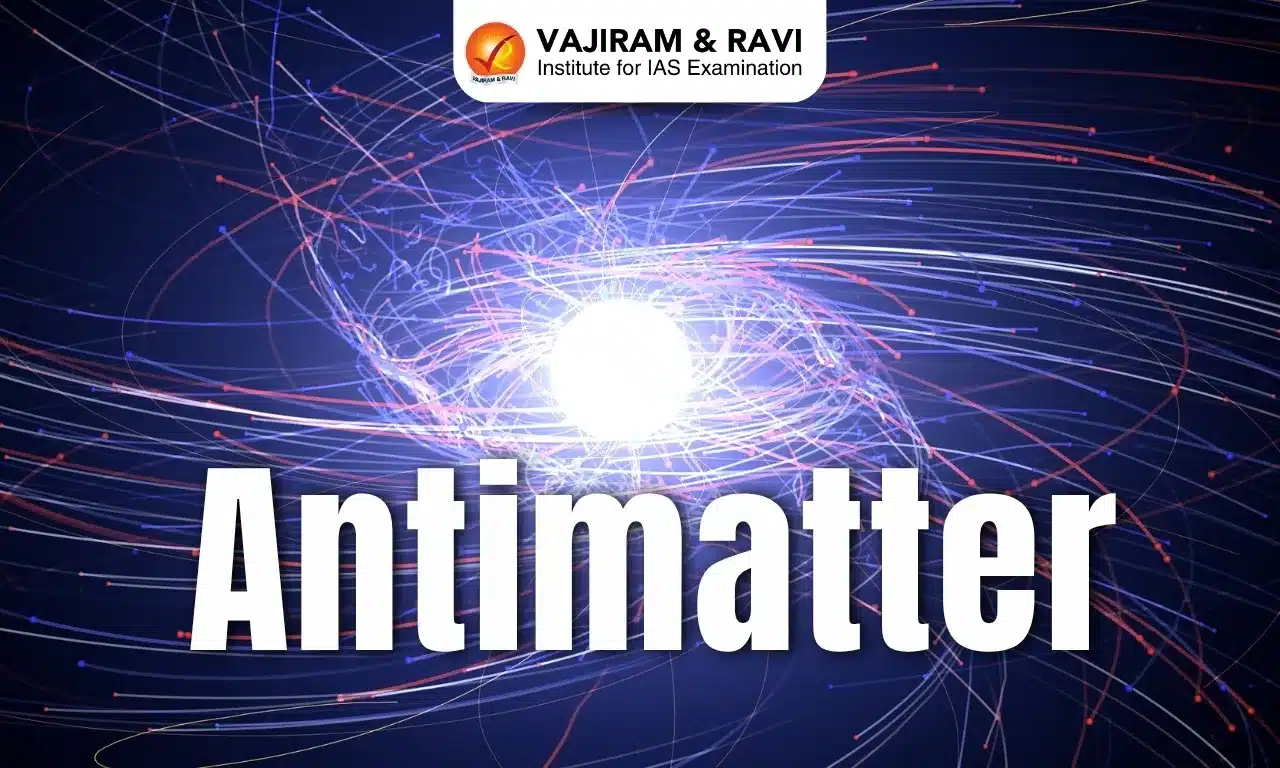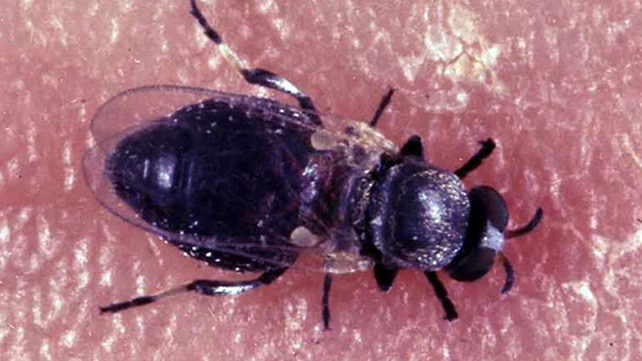Antimatter Latest News
Recently, an international collaboration of scientists based in Europe reported that they had, for the first time, observed that the matter and antimatter versions of a type of subatomic particle called a baryon decay at different rates.
About Antimatter
- Antimatter is the same as ordinary matter except that it has the opposite electric charge.
- The antimatter particles corresponding to electrons, protons, and neutrons are called positrons (e+), antiprotons (p), and antineutrons (n); collectively they are referred to as antiparticles.
- The electrical properties of antimatter being opposite to those of ordinary matter, the positron has a positive charge and the antiproton a negative charge; the antineutron, though electrically neutral, has a magnetic moment opposite in sign to that of the neutron.
- Matter and antimatter cannot coexist at close range for more than a small fraction of a second because they collide with and annihilate each other, releasing large quantities of energy in the form of gamma rays or elementary particles.
- Antimatter was created along with matter after the Big Bang. But antimatter is rare in today’s universe.
- Humans have created antimatter particles using ultra-high-speed collisions at huge particle accelerators such as the Large Hadron Collider, which is located outside Geneva and operated by CERN (the European Organization for Nuclear Research).
Source: TH
Last updated on November, 2025
→ Check out the latest UPSC Syllabus 2026 here.
→ Join Vajiram & Ravi’s Interview Guidance Programme for expert help to crack your final UPSC stage.
→ UPSC Mains Result 2025 is now out.
→ UPSC Notification 2026 is scheduled to be released on January 14, 2026.
→ UPSC Calendar 2026 is released on 15th May, 2025.
→ The UPSC Vacancy 2025 were released 1129, out of which 979 were for UPSC CSE and remaining 150 are for UPSC IFoS.
→ UPSC Prelims 2026 will be conducted on 24th May, 2026 & UPSC Mains 2026 will be conducted on 21st August 2026.
→ The UPSC Selection Process is of 3 stages-Prelims, Mains and Interview.
→ UPSC Result 2024 is released with latest UPSC Marksheet 2024. Check Now!
→ UPSC Prelims Result 2025 is out now for the CSE held on 25 May 2025.
→ UPSC Toppers List 2024 is released now. Shakti Dubey is UPSC AIR 1 2024 Topper.
→ UPSC Prelims Question Paper 2025 and Unofficial Prelims Answer Key 2025 are available now.
→ UPSC Mains Question Paper 2025 is out for Essay, GS 1, 2, 3 & GS 4.
→ UPSC Mains Indian Language Question Paper 2025 is now out.
→ UPSC Mains Optional Question Paper 2025 is now out.
→ Also check Best IAS Coaching in Delhi
Antimatter FAQs
Q1. What is the main difference between matter and antimatter?+
Q2. What is the antimatter equivalent of an electron called?+
Q3. What happens when matter and antimatter come into close contact?+

















